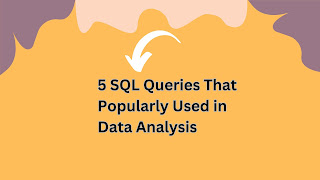 |
| [Tibco online learning] |
When you start
Spotfire for the first time, your first task is to load some data. This data can come from a file, a database, or even the clipboard.
Data is at the heart of all analysis, and it's important that you know, not only how to load data into Spotfire, but also how data works. If you handle a lot of data in spreadsheet form, you will no doubt understand its content and meaning very well. You might even have developed advanced and insightful representations of your data. However, there is so much more you can do with Spotfire to improve the handling of this subject matter.
Importing data into Spotfire is just the beginning. To progress into its rich analytic world, you will have to become familiar with the relational database model. You will have to learn some formal data concepts. We will therefore spend some time taking a look at some basic database principles to set you on your way to advance quickly beyond the limited world of the spreadsheet.
Spotfire has five core components:
Spotfire Server: The spotfire Server is the hub of the Spotfire system. It handles user logins and the configuration of accounts, licenses, and other system preferences; it can connect users to external data sources; and it hosts and controls access to the Spotfire library, which is stored in the Spotfire Database.
Spotfire Database: The Spotfire database stores all the account administration and configuration information needed to make Spotfire work. It also stores the Spotfire library, which looks to the user like a hierarchical file system for organizing and store analysis files but is in fact a set of database BLOBs (binary large objects). The Spotfire Database can be built in Oracle or Microsoft SQL Server.
Spotfire Web Player: The Spotfire web player is a web application installed in the Microsoft Internet Information Services (IIS) web server. It delivers analysis files that are saved in the Spotfire library to users via a web browser, which is the general mechanism through which Spotfire users consume reports and analytics solutions. As of Spotfire Version 6.5, the web player has been renamed Spotfire Consumer. There is also a new web product called Spotfire Business Author, which offers limited report authoring via the web player.
Spotfire Automation Services: Spotfire Automation Services is a tool for automating certain Spotfire tasks into jobs that can be run on demand or to a schedule.
Spotfire Client: The Spotfire Client is a desktop installation that provides access to the report authoring functionality of the product according to the licenses granted to the user. Clients can be used in offline mode, but it is necessary to log in to the Spotfire server to save material to and retrieve material from the Spotfire library. An enterprise license provides nothing more than the equivalent of web player access and no report authoring is possible. A professional license provides full access to Spotfire's rich functionality, which now includes TIBCO Enterprise Runtime for R (TERR), an enterprise-class implementation of the R statistical programming language. As of Spotfire Version 6.5, the professional client has been renamed Spotfire Analyst.
Three additional optional Spotfire components are worth mentioning:
Spotfire Advanced Data Services: Spotfire Advanced Data Services delivers third-party data to Spotfire as prebuilt, reusable views.
Spotfire Statistics Services: Spotfire Statistics Services delivers the results of S+ and R models to Spotfire for visualization from a central location.
Spotfire Desktop: Spotfire Desktop is a completely standalone implementation of Spotfire that does not require any servers and is targeted at analysts who essentially work offline all the time. It has the full analytic power of the main product.



.jpg)

Comments
Post a Comment
Thanks for your message. We will get back you.